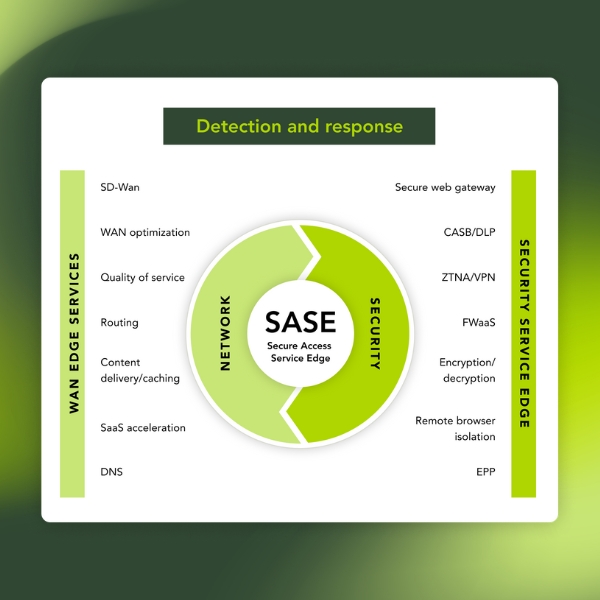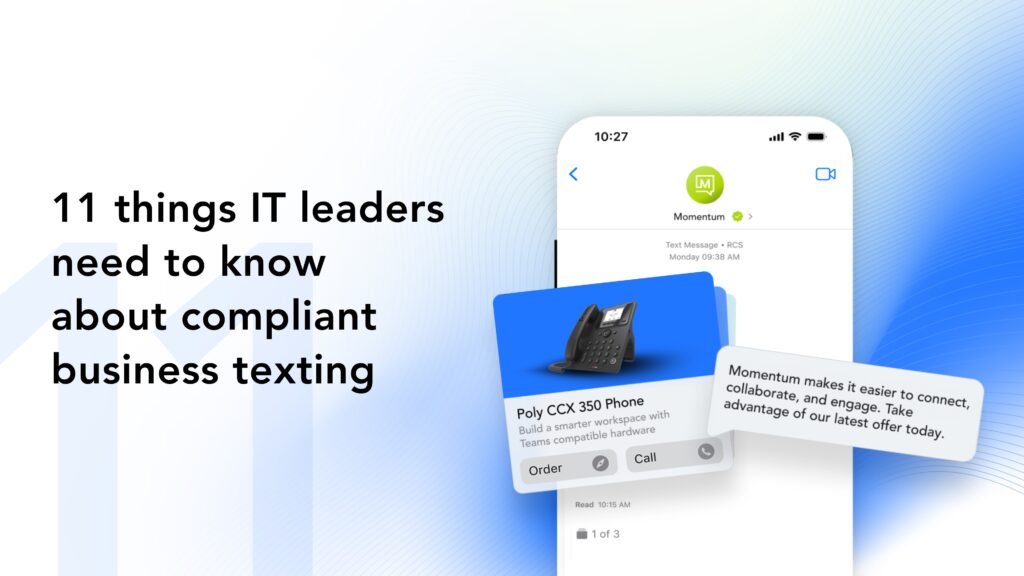Secure Access Service Edge (SASE) has gained momentum as a cloud-native model for converging networking and security. It’s been a foundational shift for IT teams managing cloud-first environments, remote workers, and complex branch networks. But what comes next?
SASE adoption is accelerating. According to Gartner, by 2027, 65% of SD-WAN purchases will be part of a single-vendor SASE offering, up from 15% in 2021. These single-vendor SASE solutions use cloud-centric architecture to deliver integrated network and security services, all managed by one provider.
Enterprises are clearly signaling a shift toward simplicity, tighter integration, and cloud-native delivery, with increasing reliance on cloud services for scalability and flexibility.
As demands for better user experience, stronger security, and easier operations converge, the SASE architecture is evolving to meet these needs.

Key trends are shaping the future of SASE and enterprise networks. This blog explores how the model is growing beyond the WAN edge to simplify IT and secure the future of enterprise networks.
Related Content: A Complete Guide to SD-WAN for Business
Beyond the WAN: Where secure access service edge (SASE) is going
When SASE first entered the market, it focused on solving performance and security issues at the WAN edge. SASE combines network security and wide area networking capabilities into a unified, cloud-based service. Replacing MPLS, supporting remote users, and applying Zero Trust policies at scale were the primary drivers.
Today, those needs remain, but the scope is expanding. Enterprises are applying the same principles to internal networks, edge environments, and cloud-native applications, as the SASE architecture continues to combine network security with wide area networking capabilities as it evolves.
This shift reflects broader needs for:
- Unified security policy enforcement across both LAN and WAN environments
- Increased visibility into east-west traffic within enterprise networks
- Support for dynamic workspaces, third-party access, and IoT proliferation
As these environments converge, the evolving SASE architecture is expected to deliver the same agility, control, and protection for internal traffic that it already does for external connectivity.
AI and automation are now core capabilities
Visibility alone is no longer enough. IT teams are overwhelmed by alerts and dashboards, and the manual effort required to troubleshoot performance issues or respond to threats is unsustainable. SASE is evolving to close this gap with AI-driven intelligence, leveraging AI to improve network management and security.
The future of SASE includes:
- Automated detection of network anomalies and behavioral deviations
- Root-cause identification that shortens time-to-resolution
- Predictive insights that warn teams of potential degradation before users are impacted
- Context-aware policy suggestions that adjust to user, device, or location
AI and automation in SASE aren’t replacing human oversight. They’re making it more efficient. As enterprises scale, these capabilities will become essential to maintaining both performance and security.
Unified cloud security needs to be built in—not bolted on
Hybrid and multi-cloud environments are the default for modern enterprises. But stitching together separate security tools for on-prem, SaaS, and IaaS platforms has led to policy gaps and administrative complexity.
A modern SASE solution integrates components, such as a secure web gateway, cloud access security broker, and security service edge, to provide unified protection across all environments.
The next phase of SASE will position it as a unified control plane that brings these environments together, delivering comprehensive protection and data protection for cloud workloads and applications.
Key developments include:
- Centralized visibility into SaaS usage, cloud workloads, and data flows
- Unified policy enforcement across data centers, cloud providers, and remote users
- Integration with tools like CNAPP (Cloud-Native Application Protection Platform) and CSPM (Cloud Security Posture Management)
SASE and cloud security posture management go hand-in-hand. By embedding these controls directly into the network layer, enterprises get stronger coverage without sacrificing agility.
Optimizing network performance in the SASE era
Optimizing network performance is more critical than ever as organizations depend on cloud-centric architectures to deliver secure and efficient access to applications and data.
As enterprises shift to remote work, hybrid environments, and distributed teams, the ability to maintain robust security postures while ensuring seamless user experiences becomes a top priority.
AI-powered SASE solutions are transforming how businesses approach network performance. By leveraging artificial intelligence and machine learning, these platforms can analyze network traffic in real time, identify patterns, and proactively detect zero-day threats. This advanced threat detection, combined with predictive analytics, enables organizations to mitigate potential threats before they impact users or compromise sensitive data.
A cornerstone of optimizing network performance in SASE is the adoption of Zero Trust Network Access (ZTNA) principles. With ZTNA, every user and device must be authenticated and authorized before accessing network resources, regardless of their location. This approach not only strengthens trust network access but also reduces the risk of data leakage and security incidents, supporting a more resilient overall security posture.
Consistent security policies across all network and security functions, such as secure web gateways, network firewalling, and cloud access security brokers, are essential for maintaining both performance and protection. By unifying these security features within a single cloud-based service, organizations can ensure that all users and devices are governed by the same access controls and security policies, eliminating gaps that often arise from legacy solutions or tool sprawl.
Single-vendor SASE solutions further streamline network infrastructure by combining network security and access service edge capabilities into one integrated platform. This consolidation not only enhances operational efficiency but also simplifies management, reduces latency, and improves network performance across global networks.
Key benefits of optimizing network performance in the SASE era include:
- Improved network performance and reduced latency for all users, regardless of location
- Enhanced security posture through advanced threat detection and zero trust principles
- Increased operational efficiency with simplified, integrated network and security services
- Better protection of sensitive data and prevention of data leakage
- Seamless user experiences that drive productivity and business agility
Leading providers like Cato Networks, Check Point Software, and Fortinet offer comprehensive SASE solutions that leverage AI technologies, robust security features, and scalable security solutions to help organizations protect data, enforce consistent security policies, and stay ahead of emerging threats.
Ultimately, optimizing network performance in the SASE era requires a holistic approach, one that leverages AI-powered SASE, zero trust principles, and integrated network and security functions. By embracing these innovations, organizations can deliver secure and efficient access, protect sensitive data, and ensure their network infrastructure is ready for the challenges of tomorrow’s digital landscape.
Related Content: SD-WAN vs. SASE
What’s holding SASE back from its full potential?
The future of SASE depends not just on technology, but on execution. Organizations must also address evolving security challenges in modern environments, including those introduced by remote work, IoT, and hybrid infrastructures.
Several barriers continue to slow progress:
- Organizational silos: Networking and security teams often operate independently, which delays unified policy enforcement.
- Tool sprawl: Enterprises attempting to “build their own SASE” with loosely integrated tools create more complexity than they solve, especially when trying to integrate with existing infrastructure.
- Vendor lock-in and uncertainty: Incomplete or immature offerings can leave IT teams hesitant to fully commit.
- Limited understanding of Zero Trust: Many organizations still lack the architecture or mindset to implement true identity-based access.
The rise of sophisticated cyber threats further underscores the need for effective SASE adoption to protect distributed and cloud-centric networks.
Solving these challenges requires choosing a single-vendor SASE platform designed for cloud-native delivery that’s also supported by a partner that understands the full stack.
From tactical bundles to true consolidation
SASE was introduced as a way to simplify operations, but early implementations often resulted in a patchwork of services labeled as “SASE.” The next generation of solutions is correcting that.
What to expect from the future of single-vendor SASE:
- One platform, one policy engine: True SASE delivers networking and security through a unified control plane, not separate tools stitched together.
- Fewer vendors, fewer gaps: A converged architecture reduces operational risk, improves collaboration, and accelerates issue resolution.
- Integrated teams: With shared visibility and workflows, networking and security teams can respond faster and work toward common goals. Unified SASE platforms also enhance network monitoring and security operations by centralizing data analysis and enabling faster incident response.
- Continuous innovation: Cloud-native platforms deliver updates and improvements automatically, eliminating slow refresh cycles. Integration of threat intelligence further improves detection and response by leveraging AI-driven insights to proactively identify and prevent threats.
- Lower TCO: Consolidated licensing, reduced hardware, and streamlined management translate into measurable cost savings.
This shift isn’t just about technology. It’s a strategy to support long-term scalability, agility, and resilience.
Why Momentum is the right partner for what’s next in SASE
When supported by the right technology and service strategy, SASE delivers the foundation for secure, simplified, and future-ready infrastructure.
Momentum has been helping enterprises modernize and secure their networks for over two decades. With a deep understanding of SD-WAN, cloud connectivity, and secure networking, we bring the experience and operational strength needed to make SASE successful, not just in theory, but in real-world enterprise environments.
Our partnership with Cato Networks means customers benefit from a single-vendor SASE platform backed by one of the world’s leading cloud-native architectures, paired with Momentum’s proven ability to design, deploy, and manage global network solutions.
Whether you’re starting your SASE journey or expanding its reach across the enterprise, we’re here to help you move forward with confidence.



